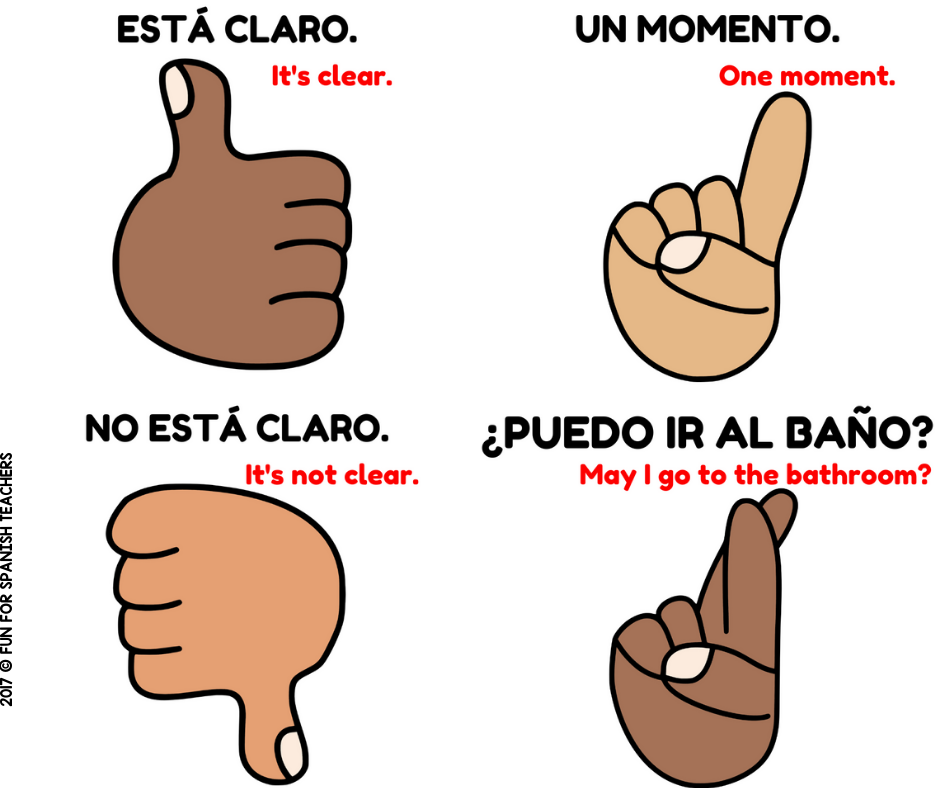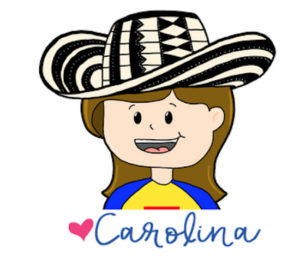4 Facebook Communities for Elementary Spanish Teachers
Here are the names of the groups:
Here are the names of the groups:



Second day of sharing! Yay! This activity is for second graders and up! For this activity you will need *inflatable beach balls and permanent markers. This will be a great introduction activity. Distribute the balls to each child. They will have to complete the following sentences:
Xtine says:
“Hi all! My district is moving more towards a centers based learning and I was wondering if you have any suggestions for centers for K-2 Spanish? We are currently working on numbers 1-10 and wanted to see if I could somehow incorporate centers. I have no curriculum so I’m all on my own. I have 19 classes with the class size ranging from 8-22 students. Any advice or help would be great!”
Kelly: using color sticks at one table, numbers at another, vocabulary matching at another, copying printed words in Spanish (lots of web sites for this) just a few ideas off the top of my head
Joe: If you can get some internet-connected devices then one or two centers can provide online activities. tackk.com/colorsinspanish
Janet: Calico have some great ideas: Calico
Susan: I do centers every Friday. Some favorites are:
Candyland (say colors and count in Spanish)
UNO cards with toss across ( they earn a bean bag to throw for every color and number they can say correctly from the UNO CARD)
Puzzle: One center is a puzzle of the world to help them with geography.
I usually have groups of 5 students and rotate every 5 minutes. If one of the centers was a worksheet, I let them use the rest of class to work on it so they are calm by the time their teacher picks them up. Hope this helps!
Jessica: With 2nd graders I do a conversation center, a listening center, a game center, technology center (Spanish apps on tablet generally), independent work center & one with me. . I do centers with 1st grade too, though I don’t generally do conversation center with them. With kinder I do “actividades” = sort of center like with lots of games and puzzles. (example shape memory, number memory, body parts puzzle match up etc)
Diane: get some of the shape cutouts from dollar store and make matching cards. Pictures & words or just some in English and same ones in Spanish. We have table races where groups match up the pairs. Sometimes individuals match so I can assess. Other times kids play memory with the cards in small groups.
Amy: I got a number puzzle and labeled the numbers in Spanish so they can say the numbers as they take it apart. The puzzle also has a plus, minus, and equals sign, so they can use it to make math problems. I also got a fishing set with fish in different colors on one side, and numbers on the other. They can “fish” by number or by color. I also got a Zing-O game, several varieties of Bing-O games, and books they can read alone. I still don’t have much, but it’s a start!
I got some Legos and labeled them with days of the week. They have races to put the days of the week in order. A Twister game that I covered up the English with Spanish. I am currently trying to come up with some Go Fish games. I also have a “free draw” corner and some Sp-Eng dictionaries. They can put their name in a box for prize drawings if they do any writing in Spanish.
I also have a puzzle of South America, a dice game, and an emotions game. ha… I guess I have more than I realized. . It still doesn’t seem like a lot of variety, though. It’s almost all vocabulary-based except for the books.
Fun for Early and Elementary Spanish Teachers: Here is just one more idea: https://bit.ly/2hmWqk6
Soyla: Check out my Bilingual Pinterest boards for ideas: https://www.pinterest.com/castilloesc17/
Xtine: Thank you all for your help!!! I’m going to definitely incorporate some of your ideas!
A few months ago I shared an ice-breaker activity to help students warm up after returning from winter break. It turns out that this activity can also be used as one to close the school year. It’s a great activity to get everyone moving, using the language, and talking about plans for the summer break.
This activity is set up as an interview. Students have to move around the room asking different classmates about their future plans. I usually give them five to ten minutes to complete the activity. My rules are that they need to use Spanish and need to find one person per box.
At the end of the activity, you can count and see which student got the most names. You can also graph the activities to identify the most popular summer plan.